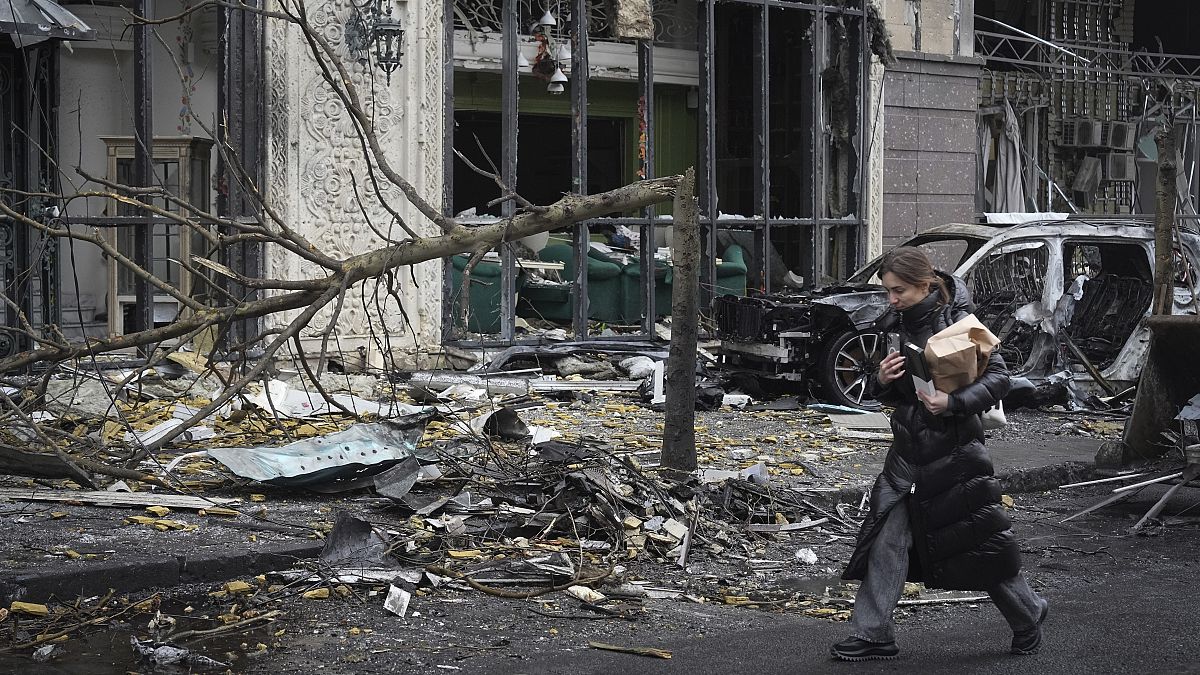Movie Reviews
‘The Equalizer 3’ review: Finally, one of these things is good

Like many a burnt-out employee, “The Equalizer” desperately needed a vacation.
And so, for its final chapter, “The Equalizer 3,” the Denzel Washington vigilante-justice film series jets off to Italy, and soaks in the sun of the Amalfi Coast while soaking the Amalfi Coast in the blood of irredeemable criminals.
Running time: 109 minutes. Rated R (strong bloody violence and some language). In theaters Sept. 1.
The first two movies in this ultra-violent and gory franchise, directed by Antoine Fuqua, were pathologically unpleasant. Way too dark with a drab Boston setting and far more plot than necessary, the slogs grated on the brain.
Washington was always good in them, of course, but the lift was too heavy even for the experienced Oscar winner.
Finally, on the series’ supposedly last outing, one of its films lives up to the ever-deepening talent of its leading man. “Equalizer 3” adds nothing new to the thriller genre, true, but it wisely acknowledges what’s worked well before.
Namely, the mafia.
The Threequalizer begins with Robert McCall (Washington), a former CIA black ops agent with a skill for killing, at a winery in Sicily surrounded by mangled corpses. The dead — McCall’s victims — are mafiosos who have used the vineyard as a front to smuggle deadly synthetic amphetamines from Syria.
Often frustratingly unbeatable, this time McCall is shot in the back and wakes up confused in an idyllic town near Naples recovering at a doctor’s home.
“Are you a good man or a bad man?” the doc asks.
A woozy McCall replies, “I don’t know,” and passes out.

Making Washington’s badass bedridden and then hobbled lends the usually impenetrable McCall some vulnerability and a watchable arc that the first two films lacked. For once, an “Equalizer” is more than a murderous walk in the park.
As the weeks go by, the hardened man calls himself Roberto, begins to love his adopted home, befriends the locals and decides to stay put. He’s determined to protect the tormented citizens from the mafia-like Camorra forces by any means necessary — a k a ruthlessly gruesome death.
Fuqua likes to drain these films of color, nearly to grayscale, but Italy nonetheless looks as beautiful as it does foreboding. The roars of motorcycles outside, ubiquitous in Western Europe, amp up our paranoia about what nefarious forces could be riding in on them.

As he settles in, McCall helps a CIA agent named Emma Collins (Dakota Fanning), who’s both suspicious of and intrigued by the mysterious informant, track down the Sicilian drug traffickers.
Every fix Fuqua makes this time is for the better. Surprisingly for the end of a trilogy, “3” is the shortest of the “Equalizer” series, clocking in at 30 minutes less than the first one. Belíssimo.
Italian organized crime makes a weightier match for deadly McCall — a Godzilla versus Mothra of the world’s seedy underbelly. Individually, the baddies are static and uninteresting, but their unique personalities are beside the point.

The reason for this franchise is Washington, who was 59 when he began in this role nine years ago, and who imparts impressive pathos on a man who we watch shove a fireplace poker through a thug’s throat. Sometimes he even wrings a hearty laugh or two out of his killing sprees.
It’s nice to see “The Equalizer,” a series I hated until now, go out with a film so unequal to its rotten predecessors.

Movie Reviews
KCR Movie Review

KCR, a political drama set against a Telangana backdrop, features comedian-turned-actor Rakesh in the lead role. Known for his appearances in the popular TV show Jabardasth, Rakesh not only stars as the protagonist but also produces the film under his home banner. Directed by Garudavega Anji, the movie released in theaters on November 22 and is now streaming on Aha. Despite its ambitious concept, KCR struggles to deliver a gripping experience.
Plot
The story begins in Rangabai Tanda, a village in Kesavaravupally, Warangal district. The protagonist, Keshavachandra Ramavath (Rakesh), is a middle-class youth who idolizes Telangana Chief Minister K. Chandrashekar Rao (KCR). His unwavering admiration earns him the nickname “Chota KCR.” Keshava is romantically pursued by Manju (Ananya Krishnan), a girl from the same village, who dreams of marrying him.
However, Keshava’s joy over his village’s agricultural prosperity is short-lived when he learns that their land is marked for acquisition to construct a ring road. Shocked and determined to protect his community, Keshava refuses his arranged marriage with Manju and instead declares that he will marry a city girl. During a heated family discussion, he challenges his elders, vowing to bring KCR himself to his wedding or cancel it altogether.
The second half chronicles Keshava’s journey to Hyderabad to fulfill this promise. What happens next? Does Keshava succeed in inviting KCR to his wedding? The answers form the crux of the narrative.
Analysis
The story unfolds during two key periods: the time leading up to the formation of Telangana and its aftermath. It highlights the struggles of K. Chandrashekar Rao (KCR) in achieving statehood and his subsequent governance. The first half focuses on the protagonist’s deep admiration for KCR, while the second half revolves around his determination to invite the leader to his wedding, setting the stage for his journey to the city.
The director ensures that equal importance is given to the roles of both the hero and heroine, as well as their families. The integration of the village as a significant element in the story is commendable. However, the characterization falters as the hero, initially portrayed as a proud and content village youth, suddenly declares his preference for a city girl and urban life, creating inconsistencies in his arc.
The comedy scenes involving the hero and his friends fail to land effectively, feeling forced and uninspired. While the film attempts to convey emotional depth, many sequences come across as overacted, especially those featuring Rakesh. Furthermore, the minor characters, portraying villagers, lack impactful performances, leaving the narrative underwhelming.
Although Rakesh’s intent in crafting the content is evident, the lack of thorough preparation and rushed execution diminishes the film’s overall potential.
Performances
Rakesh: As both actor and producer, Rakesh demonstrates sincerity, but his comedic strengths don’t translate well into this film. Emotional scenes feel overacted, detracting from the film’s impact.
Ananya Krishnan: Delivers a decent performance as Manju but is limited by her character’s development.
Supporting Cast: Notable names like Thanikella Bharani and Thagubothu Ramesh make brief appearances but fail to elevate the narrative.
Technical Aspects
Direction: Garudavega Anji captures the rural essence of Telangana through impressive visuals but struggles to weave a compelling story.
Music: Charan Arjun’s compositions and background score are average, lacking memorable tunes.
Cinematography: Rural settings are beautifully depicted, thanks to Anji’s expertise behind the camera.
Editing: Madhu ensures a decent pace, but the screenplay limits the overall experience.
Verdict
KCR aims to tell a heartfelt story about a village youth’s passion for his community and hero-worship for KCR. While the intent is commendable, the execution falls short in connecting with audiences. The narrative lacks the emotional depth and comedic charm necessary to make it engaging. With better writing and stronger characterization, this film could have been more impactful.
Movie Reviews
Movie Review: A Tale Trapped at “The Crossroads,” Never Going Anywhere

“The Crossroads” is the sort of movie you get when you park two attractive but bland young actors on a modestly scenic piece of real estate and take romance pretty much off the table.
A stunningly dull chat-a-thon of silences, evasive question-and-answer conversations, abrupt, contrived arguments, literary name dropping and cliched third act “diagnoses” explaining much of what’s come before, it’s as good an argument as any against “keeping things simple,” tuning out the outside world and such.
You’d die of boredom.
Emily Coupe arrives at the titular filling station/convenience store/diner on the border between Arizona and New Mexico, jumps out of a car with her backpack, guitar, torn tight jeans and pink hair extensions, only to be “rescued” by “a cowboy” played by Nick Ballard.
“Star” is her name. She wants to be a singer-songwriter. But she’s fled LA, heading for “Dubuque.” Not that she gives this away any time soon.
Logan isn’t especially friendly, but he offers her a lift in his ancient Ford pickup, talks about “weather comin’” (We can see the skies. Nope.) and takes her to his remote farmhouse.
Don’t get your hopes up. This isn’t a horror movie.
Star is closed-off, working out some things. Logan is shut-down, dealing with his own issues. The script has them spend 95 minutes doling out even the tiniest hint of information about their names, their backgrounds, the time setting we’re dealing with and the problems they’re struggling to overcome.
Director Douglas A. Raine and screenwriter Ginia Desmond break that fundamental convenant they’re honor bound to take with the audience. Tell us what your movie is about, tell us who the characters are and don’t bore us to death waiting around for something — ANYthing — to happen.
Only somebody who thinks leaving LA for Dubuque is a fun idea could conjure up a leading lady dense enough to say “A clothesline? I’ve never used one.” Even if you haven’t, honey, there’s no danged sense admitting it.
Only a “cowboy” who hides his rodeo trophies in haystacks, who actually farms “hemp” now (not that we see “work” of any sort) when he isn’t reading “The Invisible Man” (H.G. Wells, 1897), with the Quran and select works of Carl Jung on his DIY bookshelves, could offer up this as a comeback.
“You’ll have to figure it out.”

Rating: profanity, adult subject matter
Cast: Nick Ballard, Emily Coupe
Credits: Directed by Douglas A. Raine, scripted by Ginia Desmond. A Desktop Entertainment release on FreeVee, Amazon Prime, etc.
Running time: 1:35
Movie Reviews
Mura Movie Review

Mura is a Malayalam action thriller directed by Muhammad Musthafa and produced by Rhea Shibu under the HR Pictures banner. Featuring Hridu Haroon, Anujith, Yedu Krishna, and Jobin Das in lead roles, the film released in theaters on November 8, garnering a positive response. It became available for streaming on Amazon Prime from December 25, 2024. Let’s dive into the plot and analysis of this gripping thriller.
Plot Summary:
The story revolves around four close friends – Anand (Hridu Haroon), Shaji (Jobin Das), Manu (Yedu Krishna), and Manav (Anujith). Anand comes from a middle-class family, while the rest hail from lower-middle-class backgrounds. Struggling with studies and responsibilities, the group often resorts to reckless escapades. To meet their financial needs, they ally with local gangsters.
Their association leads them to Ane (Suraj Venjaramoodu), a trusted henchman of gangster Ramadevi (Mala Parvathi). Impressed by their fearlessness, Ane assigns them a high-stakes mission to retrieve hidden black money from Madurai. What happens during this mission and how it changes their lives forms the crux of the story.
Analysis:
Mura captures the essence of youthful recklessness and camaraderie. Suresh Babu’s story brings to life the struggles of four young men navigating life’s challenges with misplaced priorities. The screenplay keeps the narrative tight, seamlessly blending action and emotion without overdramatizing.
The first half establishes the boys’ bonding and their initial forays into the gangster world, while the second half delves into their confrontation with larger forces. The transitions feel organic, and the film maintains a naturalistic tone throughout, drawing audiences into the emotional journey of its protagonists.
Performances:
The four lead actors excel in portraying their characters, embodying the mannerisms and attitudes of rebellious youth with authenticity. Their performances feel spontaneous and genuine, enhancing the film’s realism.
Suraj Venjaramoodu and Mala Parvathi deliver solid performances, effortlessly adding gravitas to their roles as seasoned criminals.
Technical Aspects:
Cinematography: Fazil Nazar’s visuals stand out, particularly in action and chase sequences, elevating the overall tension.
Music and Background Score: Christy Joby’s background score is a significant strength, with the theme music being a notable highlight.
Editing: Chaman Chacko’s crisp editing ensures there’s no room for unnecessary scenes, maintaining a steady pace throughout.
Final Verdict:
Mura is an engaging action thriller that combines raw emotion with edge-of-the-seat moments. It successfully delivers a message about the importance of making the right choices in life and the consequences of veering off the moral path. Despite minor flaws, the film’s grounded approach and impactful storytelling make it a worthwhile watch.
-
/cdn.vox-cdn.com/uploads/chorus_asset/file/24924653/236780_Google_AntiTrust_Trial_Custom_Art_CVirginia__0003_1.png)
/cdn.vox-cdn.com/uploads/chorus_asset/file/24924653/236780_Google_AntiTrust_Trial_Custom_Art_CVirginia__0003_1.png) Technology1 week ago
Technology1 week agoGoogle’s counteroffer to the government trying to break it up is unbundling Android apps
-

 News1 week ago
News1 week agoNovo Nordisk shares tumble as weight-loss drug trial data disappoints
-

 Politics1 week ago
Politics1 week agoIllegal immigrant sexually abused child in the U.S. after being removed from the country five times
-

 Entertainment1 week ago
Entertainment1 week ago'It's a little holiday gift': Inside the Weeknd's free Santa Monica show for his biggest fans
-

 Lifestyle1 week ago
Lifestyle1 week agoThink you can't dance? Get up and try these tips in our comic. We dare you!
-
/cdn.vox-cdn.com/uploads/chorus_asset/file/25672934/Metaphor_Key_Art_Horizontal.png)
/cdn.vox-cdn.com/uploads/chorus_asset/file/25672934/Metaphor_Key_Art_Horizontal.png) Technology4 days ago
Technology4 days agoThere’s a reason Metaphor: ReFantanzio’s battle music sounds as cool as it does
-

 News5 days ago
News5 days agoFrance’s new premier selects Eric Lombard as finance minister
-

 Business4 days ago
Business4 days agoOn a quest for global domination, Chinese EV makers are upending Thailand's auto industry


















